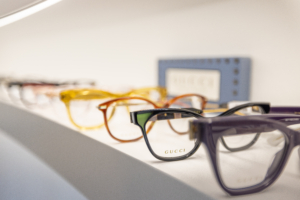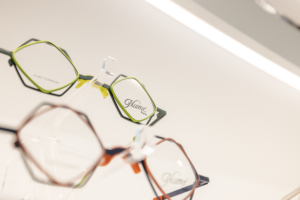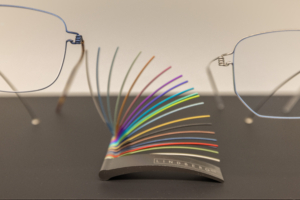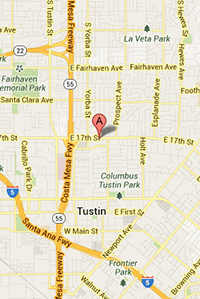It is important for us to understand your visual demands to give you the best prescription and advice. Dr. Bender makes it a priority to learn about your daily routine and find out what your visual needs are throughout the day and what your visual goals include. He then designs a lens prescription keeping these factors in mind.
For example, people that spend a great deal of time driving should use polarized lenses for glare reduction. Computer users and those who read a lot should have antiglare to reduce fatigue.
A glass prescription has three attributes:
- Design: Single Vision, Bifocal, or MultiFocal
- Material: Plastic, Polycarbonate, Hi Index, or Glass
- Treatment: Antiglare, Polarized, or Photo-chromatic (Transitions)
Design
SV Near/Reading: mono-focal lenses designed specifically for near vision demands. Not all reading glasses are the same. Maximum comfort comes from defining the exact focal point an individual wants to see clear. For example, some people read at arm’s length while some read much closer.
SV Intermediate/Computer: mono-focal lenses designed specifically for intermediate vision demands. Again, this is defined by your distance from monitor or laptop.
SV Distance: mono-focal lenses designed specifically for far vision demands. For example, these are used for driving, or for seeing the board during a class.
Bifocal: These lenses give us the ability to place the distance prescription on top and the near prescription in a small window on the lower portion of the lens. Also known as lined bifocals.
Trifocal: These allow for an additional window on the above mentioned bifocal lenses. This is for intermediate or arm’s length tasks.
Progressive: A progressive lens which ”progresses” from far to near. Much more popular than trifocals as these lenses allow a smooth transition from far to near without you being distracted by lines in the lens. There are a variety of types.
Material
Lenses are mostly plastic these days. Occasionally we use glass, but plastics are lighter and safer.
Plastic: standard plastic is the most affordable material but is heavier and less impact resistant than newer materials listed below. Also, standard plastic does not have ultraviolet (UV) protection which must be added.
Hi Index: there are several levels of hi index plastic. They get thinner and lighter as they go up the scale. UV is inherent in hi index materials. They are light and impact resistant at the same time as they scratch less.
Glass: very scratch resistant and sharp optically, but heavy and can shatter with impact. We do use glass in some of our sunglasses. You might find the vision so sharp it’s unreal!
Treatment
- Polarized: sunglass treatment to cut glare from surfaces such as water, cars, and asphalt.
- Photo-chromatic (Transitions): this enables a clear lens to go dark in the sun. Essentially one can have clear and sun glasses in a single pair.
- UV: protection from the sun’s harmful rays.
- Antiglare: a coating that cuts glare at the lens surface and allows for clearer vision, improved cosmesis, and scratch resistance.
- Anti-Scratch: protection from scratches.




